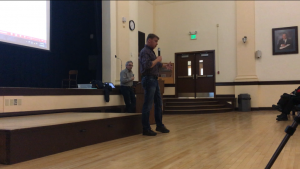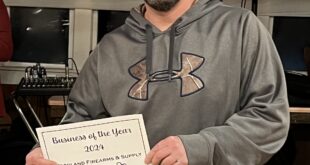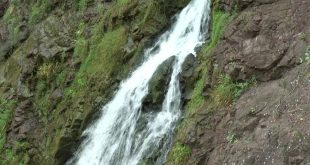With several governmental agencies joining forces to address what’s considered a growing problem in the Keweenaw…many concerned citizens turned out at last night’s public meeting and offered plenty of input.
 The task force was assembled to help find a rescue mission for a dwindling fish population near buffalo reef that’s believed to be the direct result of stamp sands covering the reef.
The task force was assembled to help find a rescue mission for a dwindling fish population near buffalo reef that’s believed to be the direct result of stamp sands covering the reef.
“That mining waste, locally known as stamp sands, has been pushed by wind and waves about 5 miles down the coast and has started to engulf both Buffalo Reef, an important spawning reef for lake trout and whitefish, as well as the Grand Traverse Harbor,” said District Coordinator for the Department of Environmental Quality of the UP, Steve Casey.
One suggestion was allowing citizens to come and pick up a truck load and take it home, one pickup truck full at a time. Another attendee suggested that we tap in to a Natural Resources Trust fund to pay for a full clean up, estimated at $100 million. Whatever plan gets put into action, it came from an abundance of diverse ideas expressed from last night’s public meeting in Lake Linden.
 Casey said, “First and foremost, we want to find a beneficial use for this material. If we can find a business that can use it, even if it has to be subsidized, that’s better than turning it into waste somewhere.”
Casey said, “First and foremost, we want to find a beneficial use for this material. If we can find a business that can use it, even if it has to be subsidized, that’s better than turning it into waste somewhere.”
The dumping of stamp sands occurred all over the Keweenaw. The western coastline is just as black as the East but because it has no bay and is exposed to the open waters of Lake Superior, the dumpings on that side of the peninsula have been carried into deeper waters where they eventually make it to the lake floor.
One option discussed is to do nothing and let nature carry the sands into the deep. A proposed alternative to that suggestion was deepwater dumping, which would move the discarded material from the Grand Traverse Bay to the deeper waters.
Phil Schneeberger of the DNR’s Fisheries Division said, “It does concern me, but as it was pointed out, that’s where the sands will end up if nothing is done anyway. That’s nature taking its own course.”
The task force will be meeting today with engineers and several potential businesses who have been seeking methods of harvesting the material into items such as cinder blocks or roofing shingles.
 Keweenaw Report Your Source for Local News and Sports
Keweenaw Report Your Source for Local News and Sports





